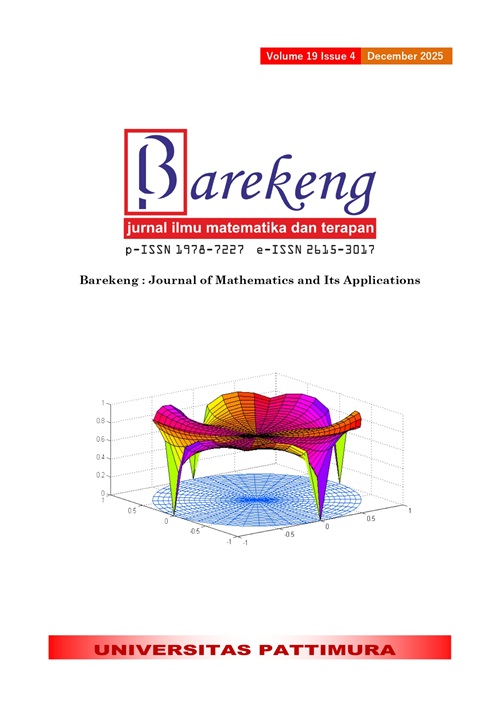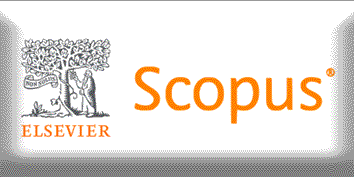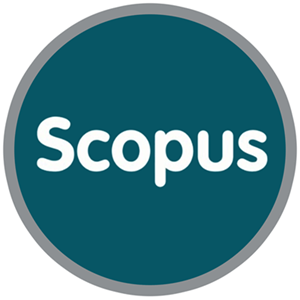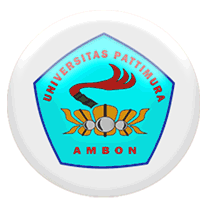FUZZY MULTI-OBJECTIVE OPTIMIZATION FOR THE PLACEMENT OF REVERSE VENDING MACHINE IN URBAN WASTE MANAGEMENT SYSTEM
Abstract
This study proposes a fuzzy multi-objective optimization model for strategically placing Reverse Vending Machines (RVMs) within urban waste management systems. The research follows a structured methodology comprising seven key stages. First, a conceptual model was designed to address the challenges of post-consumer waste collection. Second, a mathematical model was formulated to optimize two conflicting objectives: maximizing recyclable waste collection and minimizing transportation distances. Third, the model was reformulated using fuzzy parameters—specifically, triangular membership functions—to account for uncertainties in waste generation rates, disposal demand, and transportation costs. Fourth, data were collected from a Lampang Province, Thailand case study covering 15 communities and 17 candidate RVM locations. Fifth, the fuzzy model was solved using the Weighted Sum Method and implemented via exact optimization in LINGO software. Sixth, results were analyzed, showing that five RVMs can be optimally installed under a 5,000,000 THB budget, achieving 23,911.50 kilograms of waste collection with a minimized transportation distance of 179.90 kilometers. Sensitivity analyses on distance, budget, and objective weights revealed key trade-offs between operational efficiency and environmental performance. Finally, the study concludes with implications for policy and planning, emphasizing the potential of fuzzy optimization in enhancing real-world recycling infrastructure. The proposed framework supports data-driven, sustainable decision-making for urban waste systems. Future research may explore dynamic waste generation patterns, behavioral modeling, and the use of metaheuristic algorithms for large-scale implementation.
Downloads
References
T. Susilawati, I. Darmawan, and M. S. Alfaresa, “OPTIMIZATION OF WASTE MANAGEMENT IN SUMBAWA DISTRICT USING A DYNAMIC SYSTEM MODEL,” BAREKENG: J. Math. & App., vol. 18, no. 3, pp. 1403–1410, Jul. 2024, doi: ttps://doi.org/10.30598/barekengvol18iss3pp1403-1410
S. Octarina et al., “DETERMINING THE OPTIMAL TEMPORARY WASTE DISPOSAL SITES IN THE ALANG-ALANG LEBAR SUB-DISTRICT PALEMBANG USING THE P-CENTRE LOCATION PROBLEM AND P-MEDIAN PROBLEM MODELS,” BAREKENG: J. Math. & App., vol. 18, no. 4, pp. 2685–2702, Oct. 2024, doi: https://doi.org/10.30598/barekengvol18iss4pp2685-2702
M. Wan et al., “A BI-OBJECTIVE MODEL FOR THE LOCATION AND OPTIMIZATION CONFIGURATION OF KITCHEN WASTE TRANSFER STATIONS,” Systems, vol. 12, no. 12, p. 571, Dec. 2024, doi: https://doi.org/10.3390/systems12120571
H. Yu and W. D. Solvang, “A MULTI-OBJECTIVE LOCATION-ALLOCATION OPTIMIZATION FOR SUSTAINABLE MANAGEMENT OF MUNICIPAL SOLID WASTE,” Environ Syst Decis, vol. 37, no. 3, pp. 289–308, Sep. 2017, doi: https://doi.org/10.1007/s10669-017-9632-y
B. Cicekalan, A. Pekpazar, and F. Çebi, “A MULTI-OBJECTIVE OPTIMIZATION MODEL FOR WASTE-TO-ENERGY FACILITY LOCATION IN SUSTAINABLE MUNICIPAL SOLID WASTE MANAGEMENT,” in Engineering and Technology Management in Challenging Times, vol. 1137, F. Çebi, A. T. Tekin, A. Çorum, G. D. Cömert, and G. I. S. Bolatan, Eds., in Lecture Notes in Networks and Systems, vol. 1137. , Cham: Springer Nature Switzerland, 2024, pp. 55–67. doi: https://doi.org/10.1007/978-3-031-70935-7_5
S. Suksee and S. Sindhuchao, “GRASP WITH ALNS FOR SOLVING THE LOCATION ROUTING PROBLEM OF INFECTIOUS WASTE COLLECTION IN THE NORTHEAST OF THAILAND,” 10.5267/j.ijiec, vol. 12, no. 3, pp. 305–320, 2021, doi: https://doi.org/10.5267/j.ijiec.2021.2.001
N. Wichapa and P. Khokhajaikiat, “A HYBRID MULTI-CRITERIA ANALYSIS MODEL FOR SOLVING THE FACILITY LOCATION–ALLOCATION PROBLEM: A CASE STUDY OF INFECTIOUS WASTE DISPOSAL,” J. Eng. Technol. Sci., vol. 50, no. 5, pp. 698–718, Nov. 2018, doi: https://doi.org/10.5614/j.eng.technol.sci.2018.50.5.8
N. Boonpermpoon, “SELECTION OF SUITABLE METHOD AND LOCATION FOR MUNICIPAL WASTE DISPOSAL IN CHIANG MAI AND LAMPHUN PROVINCES,” Chiang Mai University, 2008. [Online]. Available: https://cmudc.library.cmu.ac.th/frontend/Info/item/dc:110056
A. Singh, “MANAGING THE UNCERTAINTY PROBLEMS OF MUNICIPAL SOLID WASTE DISPOSAL,” Journal of Environmental Management, vol. 240, pp. 259–265, Jun. 2019, doi: https://doi.org/10.1016/j.jenvman.2019.03.025
N. Wichapa and P. Khokhajaikiat, “SOLVING MULTI-OBJECTIVE FACILITY LOCATION PROBLEM USING THE FUZZY ANALYTICAL HIERARCHY PROCESS AND GOAL PROGRAMMING: A CASE STUDY ON INFECTIOUS WASTE DISPOSAL CENTERS,” Operations Research Perspectives, vol. 4, pp. 39–48, 2017, doi: https://doi.org/10.1016/j.orp.2017.03.002.
Y. P. Li, G. H. Huang, and S. L. Nie, “A MATHEMATICAL MODEL FOR IDENTIFYING AN OPTIMAL WASTE MANAGEMENT POLICY UNDER UNCERTAINTY,” Applied Mathematical Modelling, vol. 36, no. 6, pp. 2658–2673, Jun. 2012, doi: https://doi.org/10.1016/j.apm.2011.09.049
D. Kim, S. Lee, M. Park, K. Lee, and D.-Y. Kim, “DESIGNING OF REVERSE VENDING MACHINE TO IMPROVE ITS SORTING EFFICIENCY FOR RECYCLABLE MATERIALS FOR ITS APPLICATION IN CONVENIENCE STORES,” Journal of the Air & Waste Management Association, vol. 71, no. 10, pp. 1312–1318, Oct. 2021, doi: https://doi.org/10.1080/10962247.2021.1939811
H. Zia et al., “PLASTIC WASTE MANAGEMENT THROUGH THE DEVELOPMENT OF A LOW COST AND LIGHT WEIGHT DEEP LEARNING BASED REVERSE VENDING MACHINE,” Recycling, vol. 7, no. 5, p. 70, Sep. 2022, doi: https://doi.org/10.3390/recycling7050070
M. Jiménez, M. Arenas, A. Bilbao, and M. V. Rodrı´guez, “LINEAR PROGRAMMING WITH FUZZY PARAMETERS: AN INTERACTIVE METHOD RESOLUTION,” European Journal of Operational Research, vol. 177, no. 3, pp. 1599–1609, Mar. 2007, doi: https://doi.org/10.1016/j.ejor.2005.10.002.
M. Arenas Parra, A. Bilbao Terol, B. Pérez Gladish, and M. V. Rodrı́guez Urı́a, “SOLVING A MULTIOBJECTIVE POSSIBILISTIC PROBLEM THROUGH COMPROMISE PROGRAMMING,” European Journal of Operational Research, vol. 164, no. 3, pp. 748–759, Aug. 2005, doi: https://doi.org/10.1016/j.ejor.2003.11.028
C. Boonmee and C. Kasemset, “THE MULTI-OBJECTIVE FUZZY MATHEMATICAL PROGRAMMING MODEL FOR HUMANITARIAN RELIEF LOGISTICS,” iems, vol. 19, no. 1, pp. 197–210, Mar. 2020, doi: https://doi.org/10.7232/iems.2020.19.1.197.
C. Boonmee and P. Thoenburin, “TEMPORARY SAFETY ZONE SITE SELECTION DURING HAZE POLLUTION: AN INTEGRATED APPROACH WITH FAHP and FTOPSIS,” Expert Systems with Applications, vol. 245, p. 123002, Jul. 2024, doi: https://doi.org/10.1016/j.eswa.2023.123002
C. Boonmee, K. Legsakul, and M. Arimura, “MULTI-OBJECTIVE TWO-STAGE STOCHASTIC OPTIMIZATION MODEL FOR POST-DISASTER WASTE MANAGEMENT,” Production Engineering Archives, vol. 29, no. 1, pp. 58–68, Mar. 2023, doi: https://doi.org/10.30657/pea.2023.29.8
C. Boonmee, M. Arimura, and C. Kasemset, “POST-DISASTER WASTE MANAGEMENT WITH CARBON TAX POLICY CONSIDERATION,” Energy Reports, vol. 7, pp. 89–97, Sep. 2021, doi: https://doi.org/10.1016/j.egyr.2021.05.077
T. Yankova and I. Grigorova, “AUTOMATED WASTE COLLECTION SYSTEMS - POSSIBILITIES, TRENDS AND APPLICATION,” presented at the 20th International Multidisciplinary Scientific GeoConference Proceedings SGEM 2020, Sep. 2020, pp. 219–226. doi: https://doi.org/10.5593/sgem2020/4.1/s18.028
Copyright (c) 2025 Chawis Boonmee, Nopphamart Khuankaew, Phavika Mongkolkittaveepol

This work is licensed under a Creative Commons Attribution-ShareAlike 4.0 International License.
Authors who publish with this Journal agree to the following terms:
- Author retain copyright and grant the journal right of first publication with the work simultaneously licensed under a creative commons attribution license that allow others to share the work within an acknowledgement of the work’s authorship and initial publication of this journal.
- Authors are able to enter into separate, additional contractual arrangement for the non-exclusive distribution of the journal’s published version of the work (e.g. acknowledgement of its initial publication in this journal).
- Authors are permitted and encouraged to post their work online (e.g. in institutional repositories or on their websites) prior to and during the submission process, as it can lead to productive exchanges, as well as earlier and greater citation of published works.






1.gif)



